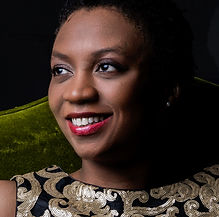Program I:
A World of Romance
Thursday, August 14, 2025 | 7:30 PM
Stevens Square Theater
A world of Romanticism awaits in this glorious program, opening with a pair of reflective works written a century apart. Amy Beach’s Romance was composed for the 1893 Chicago World’s Fair, which devoted a portion of its show to women composers. Jamaican-born Eleanor Alberga describes her Lullaby as “a kind of acknowledgement of my European heritage and a realisation that two World Wars are part of my history also.” Despite the small ensemble size, Brahms's trio is a supremely musical epic, masterfully crafted in an exquisite setting with viola taking the traditional clarinet role. The program concludes with Dvořák’s sunny, spontaneous String Sextet, about which one of his contemporaries wrote, “God himself must have been walking the Czech Lands when his humble servant bequeathed to us a work of such excellence and sanctity.”
Amy Beach Romance, Op. 23 (1893)
Eleanor Alberga No-Man’s-Land Lullaby (1996)
Tai Murray, violin; Henry Kramer, piano
Johannes Brahms Clarinet (Viola) Trio, Op. 114 (1891)
Melissa Reardon, viola; Raman Ramakrishnan, cello; Henry Kramer, piano
Antonín Dvořák String Sextet, Op. 48 (1878)
Amy Schwartz Moretti, David Bowlin, violins; Marcus Thompson, Melissa Reardon, violas; Brant Taylor, Raman Ramakrishnan, cellos
* Programs and artists subject to change
TICKETS
All prices include fees
Buy a Season Pass and save 10%!
Individual Tickets
$46 general admission / $83.50 reserved seating (sold out) / $12 children & students
VENUE
Stevens Square Theater
Stevens Square Community Center
631 Stevens Ave, Portland ME
PARKING
Free parking on site, click for details.
PROGRAM
NOTES
RUN TIME
Approximately 1 hour 45 minutes including intermission
Meet The Composers
Amy Beach
1867-1944
Amy Beach was a pioneering American composer and pianist, celebrated as the first successful female composer of large-scale art music in the United States. A child prodigy, she began composing at a young age and made her debut as a pianist at 16. Largely self-taught in composition, Beach gained national recognition with her “Gaelic Symphony” (1896), the first symphony by an American woman to be published and performed by a major orchestra. After the death of her husband, Beach toured extensively in Europe and America, continuing to compose and perform. Her legacy endures as a trailblazer who helped shape American classical music and opened doors for future generations of women composers.
Written for violinist Maud Powell, a prominent advocate for American composers, Romance showcases Beach’s gift for melody and emotional expression featuring lush Romantic harmonies and a tender, expressive character. Though brief, it highlights her ability to blend virtuosity with warmth and depth. The piece remains a favorite in the violin repertoire and is celebrated for its beauty and refinement, illustrating Beach’s stature as one of America’s foremost early composers.
Johannes Brahms
1833-1897
Johannes Brahms was a German composer and pianist of the Romantic era, renowned for his symphonies, concertos, chamber works, piano pieces, choral compositions, and over 200 songs. Born in Hamburg, he gained early recognition with support from Robert and Clara Schumann. Brahms's music is celebrated for its structural mastery and emotional depth, blending classical traditions with Romantic expressiveness. He spent much of his career in Vienna, where he became a central figure in the musical community. His works, including the German Requiem and four symphonies, remain staples of the classical repertoire.
Brahms composed his Trio in A minor, Op. 114, in 1891 for clarinet, cello, and piano, inspired by clarinetist Richard Mühlfeld. Recognizing the value of alternative instrumentation, Brahms provided a viola part as a substitute for the clarinet. This version offers a warm, intimate timbre, blending seamlessly with the cello and piano, and the viola brings a cohesive, introspective character to the ensemble.
Eleanor Alberga
b. 1949
Eleanor Alberga is a Jamaican-born British composer and pianist renowned for her vibrant, rhythmically driven music that blends classical forms with Caribbean influences. After early studies in Kingston, she earned a scholarship to the Royal Academy of Music in London, where she later became musical director of the London Contemporary Dance Theatre. Alberga's diverse output includes orchestral works, chamber music, operas, and solo piano pieces. Notable commissions include Letters of a Love Betrayed for the Royal Opera House and Arise, Athena! for the BBC Proms. In 2021, she was appointed an Officer of the Order of the British Empire for services to music.
Alberga's No-Man’s-Land Lullaby (1996) is a poignant work for violin and piano, inspired by the haunting imagery of World War I battlefields. Initially conceived as an upbeat piece, Alberga's reflections on European landscapes and the profound impact of Paul Fussell’s The Great War and Modern Memory led her to create a composition that acknowledges her European heritage and the somber history of two World Wars. Structured in three sections, the piece revolves around a single melody that gradually emerges, offering a sense of solace amidst the underlying sorrow. This evocative lullaby stands as a testament to Alberga's ability to convey deep emotion through music.
Antonín Dvořák
1841-1904
Antonín Dvořák was a Czech composer who frequently employed rhythms and other aspects of the folk music of Moravia and his native Bohemia in his work, following the Romantic-era nationalist example of his predecessor Bedřich Smetana. Dvořák's style has been described as "the fullest recreation of a national idiom with that of the symphonic tradition, absorbing folk influences and finding effective ways of using them."
Reflecting Dvořák’s growing interest in folk music, the sextet blends lyrical melodies with Bohemian dance rhythms, particularly in the dumka and furiant-inspired movements. It was one of his first works to gain international acclaim and marked a turning point in his career. The piece showcases Dvořák’s gift for melodic invention, rhythmic vitality, and warm harmonic color, making it a staple in the string chamber music repertoire and a testament to his early mastery.





%20edit.jpg)

.jpg)







